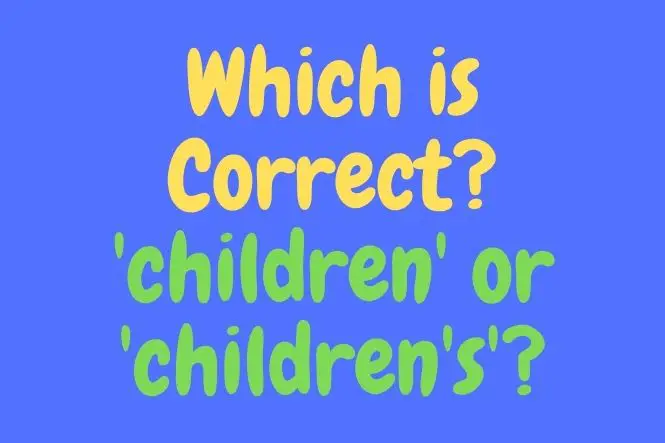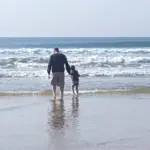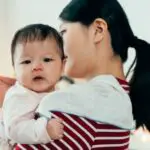Simply put, both words are correct and have a meaning in the English language. The word ‘children’ is used as the plural form of child, when there is more than one. The word ‘children’s’ is used as a possessive form, to show something belongs to those children.
Read this article to find out more about how to use both words in correct sentences and how to understand when you’re using the right one.
Table of Contents
Why do People confuse these two words?
The main reason why people get so confused between ‘children’ and ‘children’s’ is because the word children is an irregular plural noun. Often people forget this fact and apply the regular plural rules instead. On the odd occasion, the word ‘childrens’ is put instead of ‘children.
Are there rules to follow to not get confused?
Of course there are set rules which you can follow to not misuse these two words. The easiest way to remember them is that ‘children’ is a plural of ‘child’, we are stating nothing other than the noun change, it’s simplier. On the other hand, ‘children’s’ is a combination of using the word children and then adding the apostrophe to show something extra, possession, we’re doing more in this circumstance and the word is longer, more complicated.
What is the regular rule for plurals?
Adding s
In most cases, you have to add a form of ‘s’ to the end of the noun to make it plural. This is the most common way of pluralizing nouns. An example of this would be apple – apples, cat – cats and dog – dogs. We do nothing else but simply add an ‘s’ on the end.
Adding es
We occasonally add ‘es’ onto the end of some nouns when they end in ss, sh, ch, o, x or z. These are not as common but you will still see them in being used in English on a daily basis. Some examples of these are; dress – dresses, wish – wishes, watch – watches, potato – potatoes.
Adding ies
Not as common as the other two, adding ies is only needed when nouns end in ‘y’. Some examples are candy – candies, puppy – puppies and dummy – dummies. Remember, you must remove the ‘y’ before adding the ‘ies’ otherwise the word is grammatically incorrect. In addition, with this rule you need to be aware of which letter comes before the ‘y’. If a vowel comes before then we don’t change the ending to ‘ies’, we just add an ‘s’. For example guy – guys. The letter ‘u’, a vowel, is before the ‘y’ therefore we don’t change anything.
Is there an irregular rule for plurals?
Unfortunately, when it comes to irregular nouns we don’t have any rules when changing them from singular to plural form and this is what makes them so difficult. It all comes down to a case of remembering how to make them plural, creating a stamp in your brain of what to do to each word to make the change.
Is a plural ending in ‘en’ common?
Quite frankly it’s not common for plurals to end in ‘en’. As we mentioned above, the most common ways to create plurals are to add a form of ‘s’, ‘es’ or ‘ies’. However with the irregular nouns we do have words like child – children, woman – women and man – men.
When should I use the word children?
Only use ‘children’ when you want to talk about more than one child. It must be used to show that there is NOT just one child. Another common mistake is for people to say ‘childs’ and this is certainly not correct. Try to remember if you want to talk about one, then use ‘child’ it’s got less letters and therefore shorter, less. When you want to talk about more use ‘children’ and remember the word is longer, more letters = more children!
How can I use the word children?
You can use the word children in several contexts. For example, ‘There are many children in the park today’ showing that there isn’t just one child, there’s many. Or maybe you could say ‘How many children do you have?’ if you were asking someone about the number of children they have. In both sentences we are showing that there are several children and not just one.
What is a possessive form?
A possessive form is when we adjust a noun to show that it has something, it is in the possession of something. We form a possessive by adding an apostrophe at the end of the noun and then following that apostrophe with the letter s. In these sentences where we want to show possession, the object that belongs to the noun must follow the noun. Below are some examples.
When should we use the word ‘children’s’?
The word ‘children’s’ is used to show possession. We take the word children from above, a group of children, and we want to say that they have something. Maybe they have a ball between them or they have a dog with them. We use the apostrophe to show they have something and the word after ‘children’s’ is the thing that they have.
How should we use the word children’s?
If we were to say ‘The children’s dog is really nice’. The sentence shows that the children have a dog, it’s their dog and their possession. Moreover, ‘The children’s toys are under the tree’ would show that the toys belong to the children, the toys are theirs.
Why shouldn’t we use childrens’?
There are several ways to use apostrophes in the English language; to omit letters (it is – it’s), to show possession (children’s dog) and to show the plural of letters and symbols. With some words that already end in ‘s’, we cannot add another ‘s’ onto those nouns therefore we just add the apostrophe after the s to from a possession. Children’s is correct because as a plural form it does not end in an ‘s’ therefore we can add the apostrophe and the ‘s’.



